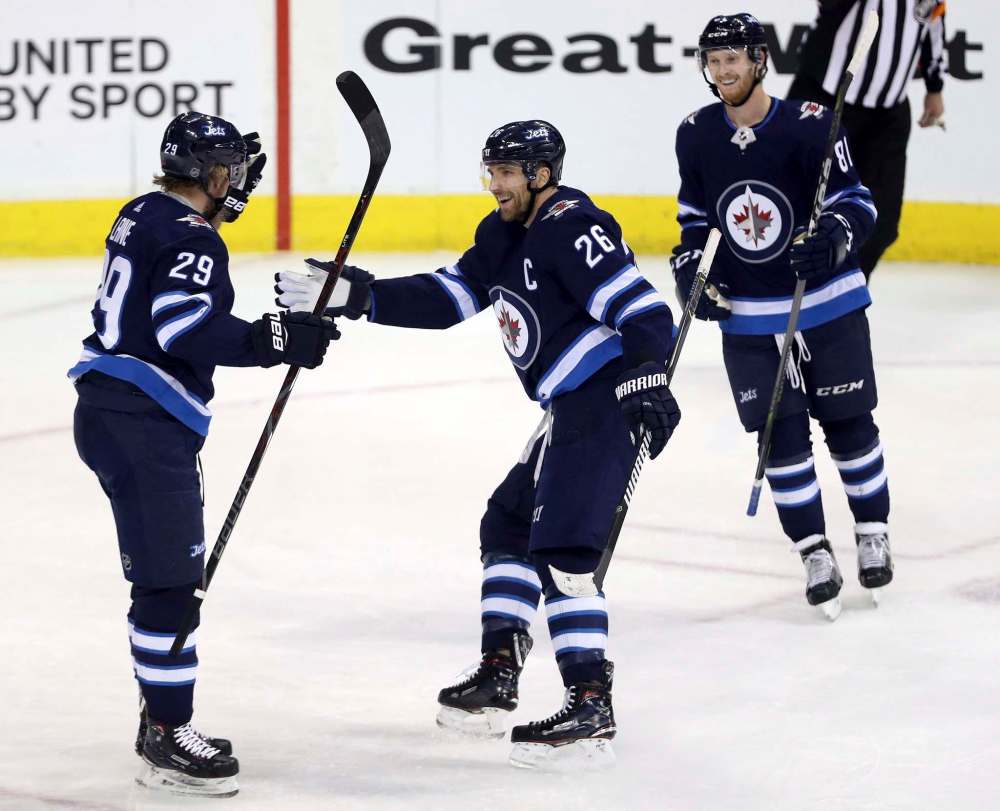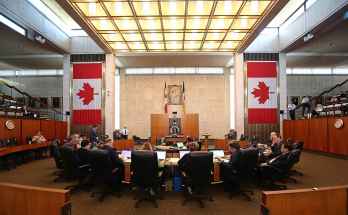Money muddle up the middle could force Jets to wing it instead
Read this article for free:
or
Already have an account? Log in here »
To continue reading, please subscribe:
Monthly Digital Subscription
$0 for the first 4 weeks*
- Enjoy unlimited reading on winnipegfreepress.com
- Read the E-Edition, our digital replica newspaper
- Access News Break, our award-winning app
- Play interactive puzzles
*No charge for 4 weeks then price increases to the regular rate of $19.00 plus GST every four weeks. Offer available to new and qualified returning subscribers only. Cancel any time.
Monthly Digital Subscription
$4.75/week*
- Enjoy unlimited reading on winnipegfreepress.com
- Read the E-Edition, our digital replica newspaper
- Access News Break, our award-winning app
- Play interactive puzzles
*Billed as $19 plus GST every four weeks. Cancel any time.
To continue reading, please subscribe:
Add Free Press access to your Brandon Sun subscription for only an additional
$1 for the first 4 weeks*
*Your next subscription payment will increase by $1.00 and you will be charged $16.99 plus GST for four weeks. After four weeks, your payment will increase to $23.99 plus GST every four weeks.
Read unlimited articles for free today:
or
Already have an account? Log in here »
Hey there, time traveller!
This article was published 15/08/2018 (2677 days ago), so information in it may no longer be current.
Back in the days I was a hockey beat writer for this paper, Craig Heisinger — who was the Manitoba Moose GM at the time and has since added assistant GM of the Winnipeg Jets to his job title — explained to me his philosophy on building a hockey team.
“You build up the middle,” he explained. “Centre, goalie and defencemen.”
I was reminded of that conversation this week when the Nashville Predators announced the signing of defenceman Ryan Ellis to an eight-year contract extension worth $50 million.
The extension won’t kick in until the 2019-20 season, but when it does and his $6.25 million annual salary begins to count against Nashville’s cap, the Preds will have $23 million in salaries tied up in just their top four defencemen — Ellis, P.K. Subban, Roman Josi and Mattias Ekholm.
That’s going to be approaching one-third of Nashville’s salary cap space on just four players and it will get even more expensive for the Preds moving forward, with Josi due a monster raise in 2020 from his current $4 million a season.

But if you believe in building up the middle, that’s the price you pay.
And the Predators, like Heisinger, clearly believe in building up the middle. Goaltender Pekka Rinne is also earning a princely $7 million a season, and the team’s top two centremen — Ryan Johansen and Kyle Turris — earn a combined $14 million annually.
That’s a pile of money piled up in the middle, but it’s hard to argue with results: the Preds went to the Stanley Cup final in 2017 and last season won the President’s Trophy as the top team in the regular season.
All of which brings us to the Jets.
Now, if Heisinger had his way — and make no mistake, the diminutive one-time equipment manager has outsized influence in the front office and especially with owner Mark Chipman — the team would be built much like the Predators.
In that world, the highest priority right now would be paying whatever it takes to lock down Winnipeg’s top defencemen to long-term deals.
But I wonder if circumstances — a looming salary-cap crunch and the uncertainty surrounding the Jacob Trouba and Josh Morrissey contract situations — might yet lead the club to reprioritize how they’re going to spend its money.

And I wonder if once the dust settles after this coming season, the Jets end up looking a lot less like the rival Predators and lot more like the 2017-18 Washington Capitals, a team that proved a few weeks back that there are other ways to build a Stanley Cup champion.
Make no mistake, the Caps were built along their forward lines last season. Their top-paid player was a winger — Alex Ovechkin — and they had less than $16 million in combined salaries tied up in their top four defencemen.
To put that number in context, consider that Subban earns more than half that ($9 million) all by himself, and Dustin Byfuglien earns essentially half that amount ($7.8 million).
So what would the Jets look like if they were built like the Capitals or, for that matter, those similarly top-heavy Pittsburgh Penguins teams that won back-to-back Stanley cups in 2016 and 2017?
Well, in that world the Jets would bet the house on three wingers — Patrik Laine, Blake Wheeler and Kyle Connor — at the end of the upcoming season.

Laine would become the highest-paid Jet when his current entry level deal expires; Wheeler would receive a monster raise — pick a number… no, higher — when he becomes an unrestricted free agent; and Connor would almost certainly join the Jets six-million-dollar men club (“Hi, Nik. ‘Sup, Helley? What’s shaking, Scheif?) when his entry-level deal expires.
Now, in a perfect world, the Jets would do all that, maintaining a Capitals-like forward threat, along with a rock-solid Predators-like defensive corps.
But we don’t live in a perfect world. We live in a salary-cap world that forces NHL general managers to choose one or the other.
And with the Jets once again this summer unable to lock Trouba down to a long-term deal and Morrissey still without a contract with barely a month until training camp, I wonder if the Jets will ultimately have that choice made for them.
With unrestricted free agency looming in 2020, I’m not sure there’s any number at this point that would convince Trouba to remain in Winnipeg long term, and certainly not one that would allow the Jets to sign him and keep all their valuable wingers happy.
And that task will only get more impossible when it becomes clear — as it surely will, sooner or later — what it is going to take to convince Morrissey to sign, whether it’s a short-term bridge deal or a longer one that gives the Jets some cost certainty.
And so in the end, maybe the Jets’ best-laid plans become something else entirely; a team that looks progressively less like a fierce division rival in Nashville and progressively more like a Stanley Cup winner in Washington.
paul.wiecek@freepress.mb.ca
Twitter: @PaulWiecek

Paul Wiecek
Reporter (retired)
Paul Wiecek was born and raised in Winnipeg’s North End and delivered the Free Press -- 53 papers, Machray Avenue, between Main and Salter Streets -- long before he was first hired as a Free Press reporter in 1989.
Our newsroom depends on a growing audience of readers to power our journalism. If you are not a paid reader, please consider becoming a subscriber.
Our newsroom depends on its audience of readers to power our journalism. Thank you for your support.








